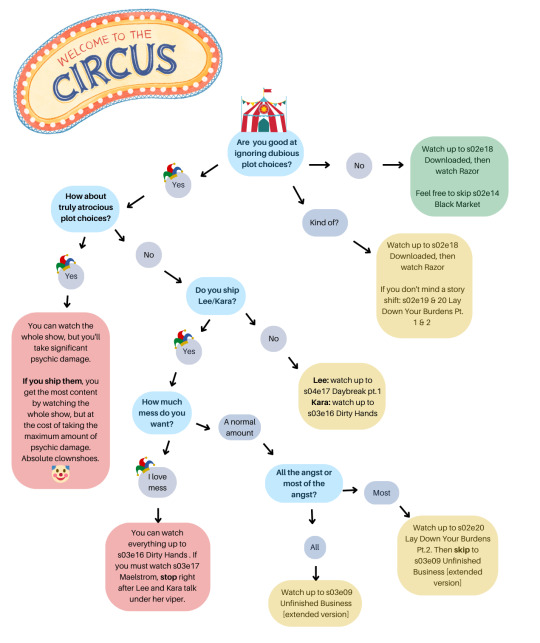#ronald d moore
Explore tagged Tumblr posts
Text
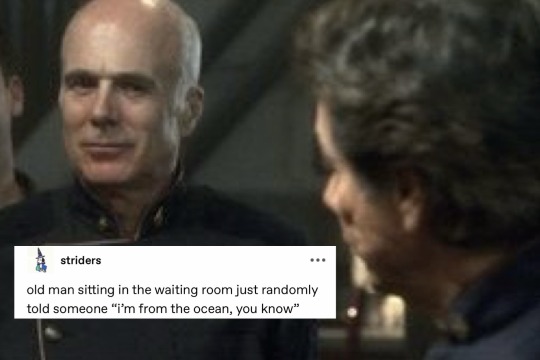


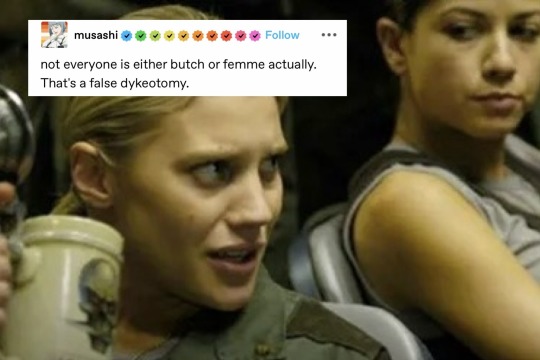


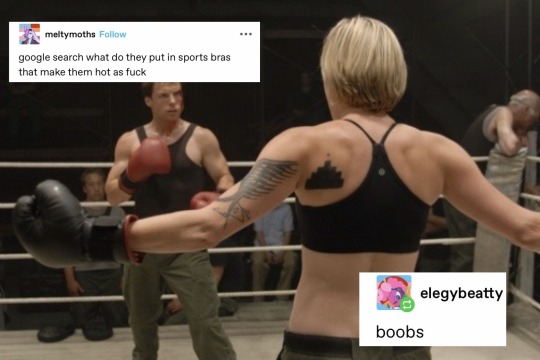
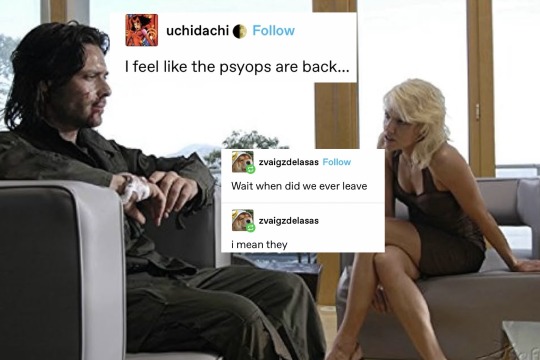
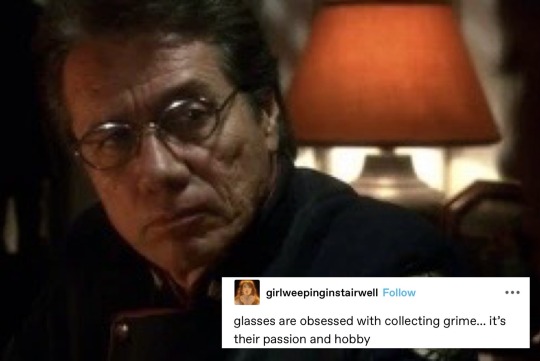
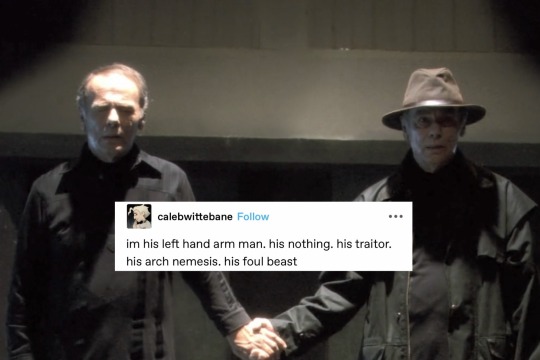
#battlestar galactica#kara thrace#william adama#lee adama#gaius baltar#caprica six#saul tigh#John cavil#laura roslin#bsg 2003#ronald d moore#bill adama
331 notes
·
View notes
Text
Star Trek First Contact was released on November 22, 1996. It was the second Star Trek film to feature the crew of The Next Generation and was directed by TNG actor Jonathan Frakes. It is reported to be one of the favorites of the TNG actors and of the TNG ST films, a fan favorite. It was the highest grossing Star Trek film until 2009. Fan favorite villians the Borg were brought back. The Borg traveled back in time to prevent the first warp drive trip and the Earth's first contact with Vulcans on April 5, 2374 (a date chosen as it was the birthday of screenwriter Ronald D Moore's son). The USS Enterprise traveled back to April 4, 2374 to make sure history stayed on track. Geordi (LeVar Burton) finally got optical implants and was able to get rid of his visor. The higher budget also allowed the film makers to better realize the Borg. Robert Picardo from Star Trek Voyager made a cameo as Emergency Medical Hologram. The character of Zefram Cochrane, who made the historic flight, first appeared in the Star Trek TOS episode "Metamorphosis" (1967) and was played by Glenn Corbett. In this version, Cochrane was played by James Cromwell. ("Star Trek: First Contact", Movie Event)
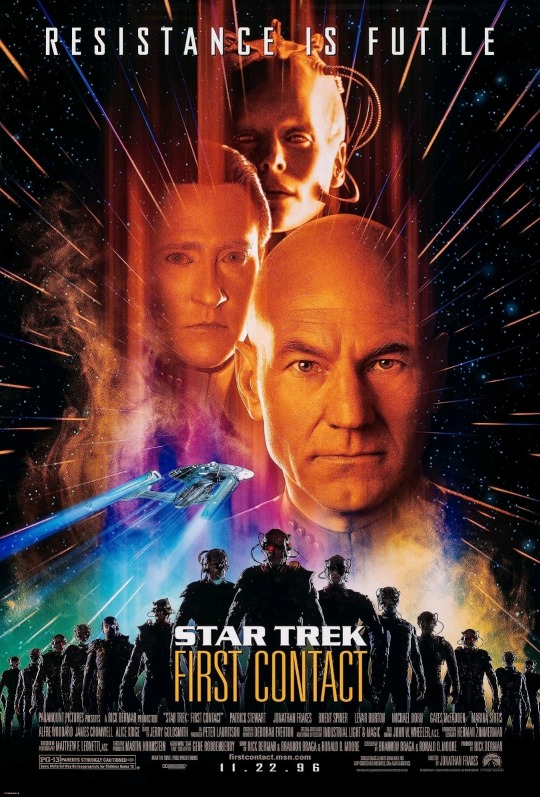
#nerds yearbook#real life event#sci fi#sci fi movies#jonathan frakes#gene roddenberry#rick berman#brannon braga#ronald d moore#star trek#star trek tng#star trek first contact#the borg#patrick stewart#jean luc picard#william t riker#brent spiner#data#michael dorn#worf#gates mcfadden#marina sirtis#deanna troi#alfre woodard#lily#james cromwell#zefram cochrane#alice krige#borg queen#dwight schultz
13 notes
·
View notes
Text
Ronald D Moore gave some hints on the new upcoming series “STAR CITY” in SDCC.
10 notes
·
View notes
Text

✨️🙏✨️🙏✨️🙏✨️🙏✨️🙏✨️
18 notes
·
View notes
Text

November 2019 to present. There's about a season and a half worth of really good TV in this speculative fiction series, co-created by Ron Moore (of BATTLESTAR GALACTICA and DEEP SPACE NINE fame), Matt Wolpert, and Ben Nedivi, which postulates a world where the Soviets beat the U.S. to the moon in 1969 and thus keep the space race running strong for decades afterward. Unfortunately, FOR ALL MANKIND is now in its fourth season, and its smattering of interesting and sometimes stirring moments remain mired in frustratingly erratic pacing (especially in the third season), an aggravating amount of truly shameless melodrama, and character conflicts that are too often driven by contrivance rather than personality.
The strongest moments are near the beginning, where the Soviet landing of a female cosmonaut on the moon triggers a frantic scramble to put an American woman into space — a storyline that also serves as a tribute to real-life pilot Jerrie Cobb (fictionalized as Molly Cobb and played by Sonya Walger, second from left below), who died in 2019 — and the political recriminations about the American space program's supposed timidity snowball into a series of deadly accidents.

If you like movies like THE RIGHT STUFF and APOLLO 13, the premise is hard to resist, but the further the show gets from the period where it begins, the clumsier it gets, and the more facile its simple-minded politics become. (The first season's apologia for Wernher von Braun's use of Nazi slave labor was quite bad enough, but did the second season really need to valorize Ronald Reagan? In what universe was it defensible for the third season to have Don't Ask, Don't Tell invented by a closeted lesbian Republican and her awful closeted beard husband, or to make the show's obvious Melon Usk pastiche a self-made Black billionaire (played by Edi Gathegi) whose family is from Kenya, rather than a wealthy white South African whose popularity and predatory impulses are inseparable from that background? Why does the show's vision of the Soviet Union more closely resemble the 1982 Clint Eastwood techno-thriller FIREFOX than the historical USSR?) The show also never really recovers from the eventual loss of key members of the original ensemble, in particular Gordo and Tracy Stevens (Michael Dorman and Sarah Jones, pictured above center), who depart at the end of the second season.
A central dilemma with FOR ALL MANKIND is that the storyline covers four decades of alternate history, and the terrible pacing and frequent time-skips make it difficult to sustain any kind of emotional connection to the characters. Even if you're really invested in certain characters' relationships, you have to resign yourself to the fact that they may only have one scene together once every 15 or 20 years of story time — and in the meantime, you'll have to put up with a depressing amount of Ed Baldwin (Joel Kinnaman) being insufferable to Danielle Poole (Krys Marshall), who has the misfortune of being one of this very white show's only recurring Black characters. The current season, set in the early '00s, is still struggling for a coherent story direction, suggesting the series may be running out of gas.
I dunno — I really liked this show at its outset, but the longer it goes on, the harder it becomes to accept its many flaws, and the current season has repeatedly made me wonder why I'm still bothering.
#teevee#for all mankind#matt wolpert#ben nedivi#ronald d moore#sonya walger#joel kinnaman#jodi balfour#michael dorman#sarah jones#krys marshall#edi gathegi#i am very keen on the 1983 version of the right stuff#i would like apollo 13 better if not for my severe tom hanks allergy#likewise the 1998 from the earth to the moon miniseries
7 notes
·
View notes
Text
Is Ronald D. Moore the American Russell T Davies?
2 notes
·
View notes
Text
Lately, I've been binging For All Mankind. It's Ronald D. Moore's new show, but other former Star Trek writers like Bradley Thompson and Joe Menosky write for it, too. The concept is that it's this alternate history where the Soviet Union lands a man on the moon a month before the Apollo 11 mission does, and this spirals out to a much more extensive space race than what existed in real life.
Honestly, I really like it. The acting is good, the writing is good, the characters are good, the pacing is good, the effects are good. It's really interesting seeing where the show's alternate history closely mirrors real life history and where it diverges.
I feel like the big thing I'm caught up on in terms of the alternate history is how it treats the Soviet Union's technological development. On one hand, it sorta has to treat the Soviet Union as if it's on par with the United States for the premise to work, but on the other hand they seem pretty adamant about dealing with the fact that there were times during the Cold War where the Soviets duplicated American technology. While in real life, this was often based around the smuggling of computer technology (something the Soviet Union traditionally struggled with), in the show this became a thing during season three's mission to Mars arc.
I'm not entirely sold on this, though. Even though in this setting, it'd make sense for the Soviets and the Americans to still be spying on each other and trying to reverse engineer each other's technological advancements, I don't really think a culture that could maintain parity with the US's space program would really need to be copying technology to this degree.
I feel like a more interesting route to go down would have been for them to still essentially have moles in NASA, but still have their own distinct solutions to certain engineering issues during the space race. This would have made certain episodes much more tense, but still allowed for the solutions to rely on moles in one agency or another already sorta knowing how the other's technology works.
I also feel like given how much thought this writing team put into how US politics in this setting might differ, it's disappointing that they hadn't put as much thought into how the Soviets' politics might differ as well. The writers sorta assume that the Soviet Union would remain mostly a closed society the entire time like it had been in real life, but I'm not entirely sold on that being as much of a possibility in a setting where they both had moon bases operating right next to each other for decades.
All of that being said, I feel like the bulk of this show really is very good. Really, I think the best thing about this show is that the ongoing space program forces the United States to become more progressive. While in real life, most of the world has dragged its feet on clean energy, the United States achieved energy independence by the early '90s, and the don't ask, don't tell policy was ultimately a short lived thing before the gays were allowed to serve openly.
The other thing I think For All Mankind did well was that it didn't rely too much on love triangles for character development. This is something that Ronald D. Moore's shows have traditionally had problems with. Deep Space Nine, for example, had the Odo/Kira/Bareil triangle and then the Odo/Kira/Shakaar triangle. Battlestar Galactica '04 had the Anastasia Dualla/Lee Adama/Kara Thrace/Samuel Anders love polygon.
Ultimately my objection to love triangles/love polygons is that they're fucking boring ways of developing your characters. To me, they've always read as "Oh, we have this character but we don't know what to do with them, so we're gonna force them into this silly little romance subplot".
This was something I was worried about with For All Mankind because I sorta knew this was an ongoing issue that Ronald D. Moore's writing teams had. I was pleasantly surprised when this never happened. There's definitely some moments where the show edged close to a love triangle, but ultimately it never really committed to any of them because the writers probably knew it would have fucked with the show's pacing.
I think the ten episode season really is a good fit for Moore in this sense. It's forced him to focus on a balance between advancing the plot and advancing the character development in ways that make sense. I think the fact there's a decade-long time skip between seasons has forced him to double down on this, too.
The character development over the seasons also makes a lot of sense. The years between seasons can explain away some of the changes, but they're also consistent enough that they aren't radically different people from one season to the next. Ed Baldwin has temper issues in 1969, 1983, and 1995, Ellen Wilson remains career driven in 1969, 1983, and 1995, and so on. How their personalities present themselves change a little bit over the years, but whatever drives them at their core remains consistent.
I feel like this is true to life in a lot of ways. Yeah, people do change as they get older, but they'll usually have a few core motivations that remain consistent, too. It's just a question of what remains consistent and how those motivations might manifest themselves as the years go on.
But yeah, this is just a really good show overall. I'm really looking forward to the next season; this is the best new show I've seen in years.
3 notes
·
View notes
Text
1 note
·
View note
Text
My BSG rewrite is returning
Good news to any who care :) Or are just interested in Battlestar Galactica content in general. Now, a few years ago, I made a post telling everyone interested about my own version of Battlestar Galactica I've been working on for ages. I decided to reluctantly abandon it because I felt it wasn't working. But I kept the notes and then began a massive blitzkrieg as it were to rebuild it from scratch.
The first was of course, what am I doing?
Well, it required a few re-watches of both the classic and the re-imagined series. Then it was expanding in my head who the characters were and what I am doing. Then developing the world in general, the story before, the story during, the story after. Then came the locations, the technologies, the cultures and the main characters. And my notes expanded. I realised I didn't want to do an analog to the real world, given recent events, so I decided to find a different direction. This is a story based on Glen A. Larson, Richard D. Moore and David Eick's own works but finding a new way to tell it. Some of the beats are the same as the re-imagined series (heck, two-thirds of the ships in the fleet along with Viper Mark II's, Raptors and Shuttles are of the RDM versions while my Galactica is a close resemblance externally but internally, well, I had to change it), but the story has its own direction to follow. As to the characters, well, I think Tigh, Apollo, Starbuck and Number Six (Baltar's gets a real name) will resemble them somewhat in terms of some backstory but they are off in another direction entirely.
The main cast and supporting are split even: Main: Commander Adama The new President Apollo Starbuck Baltar Number Six Shadow -- new character
Supporting: Colonel Tigh The female deck chief Boomer The President's assistant The non-comm comm officer The Tactical Officer Serina
Yes, Serina and Boxey are coming back. And Serina is a supporting character throughout Season 1 with an arc that is almost simultaneous to Apollo which will culminate in tragedy on a certain world. She'll be introduced as a young up-coming reporter and single mother in the Pilot. In Episode 4, she decides to sign up for the Colonial Fleet as they are in need of ECOs as well as pilots which as she studying electronic signals in University as a minor to her journalism degree. In Episode 10, almost a month later, she's Boomer's replacement ECO.
Another surprise return was the Imperious Leader. I felt that the Humanoid Cylons bickering amongst each other in the re-imagined, while sometimes amusing, didn't have any sign of being a resemblance of leadership. So returns the original ruler of the Cylons, a mysterious robotic entity who's form we insinuate resembles the original form but will not see for quite some time. He'll only appear in the pilot twice and then at the conclusion of Season 1 Episode 13 "Kobol, Part II" but really we have his shadow looming and his voice as he speaks to the Number Six character before the attacks in the Pilot and at the end of E13 and the Number Five character at the end of the Pilot. "Speak, Number Six," indeed. Also, "By Your Command" is to be a common feature spoken by any of the Humanoid Cylon Models when in the presence of their leader.
Also, Boomer and Tigh are back to their original interpretations by Herb Jefferson, Jr., and Terry Carter since it fits to me in some form. This Boomer is also not a Cylon (nor is Tigh as the Final Five don't exist) and he is engaged in an indiscreet relationship with the female deck chief that causes issues until Season 1 Episode 6 "Inquiry" when they both suspect the other of being a Cylon. Though (spoiler) they aren't, the real Cylon agent on Galactica that causes messes will be revealed in a special I plan for in the future between seasons. In reality, only one Cylon is a main cast member: Number Six.
This Number Six character is intriguing. The one who manipulates and falls in love with Baltar, her name is Natasha, is a smart seductive woman but also displays emotions of regret as her time on Caprica clouds her somewhat. She'll only appear in the first third of the Pilot, seemingly dying trying to make sure Baltar will survive, and then at the conclusion of "Kobol, Part II" before appearing onward in Season 2 and beyond. But the main Six is who I dub "Illusion-Natasha". Think she's the angelic temperamental jealous creature we know and love/loath in RDM's BSG played by the wonderful Tricia Helfer, well, it's a bit more complicated. In Season 1 after she first appears seemingly out of nowhere, she'll help Baltar in creating the Cylon Detection Device (which will not end up disappearing like it did in the Re-imagined Series) and then in pointing out directly where to strike in my own version of the fuel ore asteroid in Episode 10 "The Flying Colours" and pushing him to become Vice President in Episode 11 "The Other Battlefield" but we get hints she is not what she seems, particularly in "Kobol, Part II" where she makes him hallucinate that human sacrifice occurred on Kobol, thus why it was abandoned two millennia ago (not true, it was for another reason). In Season 2, after Baltar is led to believe he has been pushed the side, turns him into an arrogant piece of trash willing to murder to take credit for things or cover up things and somehow not get detected whilst ignoring the right way of doing things, thus leading to my own New Caprica arc and how he ends up briefly with the Cylons when some of the Models will (spoiler) overthrow the Imperious Leader (which will cost them everything). This "Illusion-Natasha" will be responsible for this. She isn't an angel but more like Count Iblis. Heck, I look forward to, when I get round to it, doing that Season 4 episode where, thanks to some potent exotic plants, allows Natasha and Shadow (who is involved in Baltar's arc a couple of times in S1 and S2 whilst going on his own journey) to see what "Illusion-Natasha" really is: a demon manipulating a human down the path to bloodshed. The price to settle New Caprica is blood, both human and Cylon.
"Human, Cylon, we're all just pawns in a game played by higher beings." -- Shadow (Season 4)
Another thing that'll change and be somewhat toned down is the religious and higher powers thing, particularly with the strange direction RDM took it (and was mocked by George R.R. Martin for). But in amongst this are some changes. Adama in this series I see more as a spiritualist character and someone who believes in a higher power but doesn't conform to any organised religion, most of the other characters either reject it entirely or pay lip-service as you do, the President goes from lip-service to full spiritualist at her journey's arc as she ends up becoming an Oracle of sorts. No, not by drugs for cancer treatment, though she has a heart condition that requires certain medications that will run out by Season 4 and the one alternative she tries in Season 1 and early Season 2 actually triggers her first set of visions whilst sparing her from the withdrawals of a dangerous exotic plant thought extinct for a reason -- it caused some soldiers to massacre a village without remorse or morals about sixty years before the series begins (about a decade before the Colonies finally unified into a single entity) -- used by a Cylon agent to make her and Adama aggressive and almost tear the fleet apart. Her visions continue through the series without outside help long afterwards. Her assistant (a sort-of Billy character that survives and has a steady relationship with the sort-of Dualla character to the point of marriage and kids) will follow her along the path. Starbuck herself remains the quiet believer praying to the Olympian deities in private whilst being the smarty-pants and tough-as-nails pilot she is. Shadow, the new character, is an open devotee of a single deity. As to the Cylons, Natasha is effectively the only Six to really believe while the sort-of Leoben Models (one who gets interrogated and induced with truth-telling plants provided by Shadow since he's doing the questioning and not Starbuck -- she had her episodes in Season 1) remain the crazy devotees we know and loath. Not to worry, Baltar doesn't get a harem in this or becomes some messianic figure. Kudos to James Callis in his role but...it didn't suit Baltar.
Other things nailed down is the timeline to avoid too many retcons, character ages, Pilot Rosters (for Galactica, Pegasus and the third Battlestar survivor) and the Ships of the Fleet with their names, type, captains and complement. I hate when dialogue doesn't match props or special effects so I nailed them down immediately. Heck, if this was ever made, I would probably make sure the background material matches what needs to be seen on-screen. It needs to be tight, it needs to make sense, and no retconning is necessary (unless I want to change something on a whim).
The fleet itself will consist of ONLY 64 ships - of which 42 of them are known designs (and have been named) while the remaining 22 are my own designs. One thing I eliminated from the pilot is that for a trinary star system that the Twelve Colonies inhabit, the only sublight-only ships are really Vipers, orbital shipyard modules and space stations. Every other ship has Faster-than-light drives. It's essential to all space flight for the Colonies so it makes sense (something tells me this plot was dropped in RDM Season 1 considering the large number of sublight ships conveniently turn up in Galactica's fleet all fitted with FTL drives -- the most notable being the Botanical Cruiser, the so-called Bulbous Ship and the Alligator-headed Ship). It is only lamented by the President and Apollo that out of the 10,000+ registered civilian vessels across all Twelve Colonies, they could only find 63 civilian ships. (Spoiler) Pegasus itself will find 5 ships which they then scrap for parts and bring the 400 civilians aboard their Battlestar and, due to it being a time of war, conscript those between 17 and 64 into service with minimal objection (there are a few kids but luckily some of the elderly agree to watch over them) while the third Battlestar, Hyperion, will gather over 30 more. The tales of Pegasus and Hyperion will be interesting ones to write and tell.
Anyways, if I haven't bored you to death and left you intrigued by this, I shall endeavour to start posting (either here or elsewhere and I'll post a link to it). In between my other projects, this is one of the most complicated ones so that's why I take long breaks in between updates. So don't hold out for consistent timelines because it is taking time. I'm one man with a job, obligations, no real private life, inconsistent time managing to see friends and family and alot going on in my skull.
But I'll do my best.
Stay tuned.
#battlestar galactica#battlestar tos#battlestar rdm#original battlestar galactica#reimagined battlestar galactica#glen a larson#ronald d moore#david eick#fanfiction#my own AU#see previous postings on profile for original notes#adama#commander adama#apollo#captain apollo#starbuck#lieutenant starbuck#tigh#colonel tigh#baltar#gaius baltar#cylons#number six#boomer#lieutenant boomer#ranting#updates#personal project
0 notes
Text
Is For All Mankind becoming science fiction? #weisf
Is For All Mankind becoming science fiction? #weisf
When I discussed For All Mankind in my occasional articles on What exactly is science fiction?, I concluded (and I still believe correctly) it wasn’t. While it looks like the genre (rockets, space, astronauts…) I feel it is firmly in the realm of alternate history. What I didn’t do was take the show’s development into account. How is For All Mankind developing? Basically, each seasons skips…
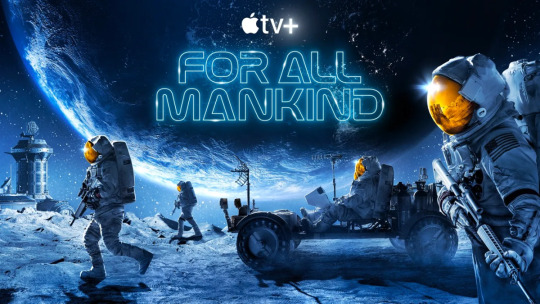
View On WordPress
0 notes
Link
0 notes
Text
On November 18, 1994, Star Trek the Next Generation transitioned to the big screen. William Shatner (Captain James T Kirk), James Doohan (Scotty), and Walter Koenig (Chekov) from the original franchise appeared in the film to pass the torch. Leonard Nimoy (Spock), Deforest Kelley (Bones), and George Takei (Sulu) were originally slated to return with Kirk instead but declined. The movie introduced Alan Ruck as Star Fleet Captain Harriman, and a new villian named Soran played by Malcom McDowell. Returning from the TV series were Patrick Stewart (Picard), Jonathan Frakes (Riker), Brent Spiner (Data), LeVar Burton (Geordi), Michael Dorn (Warf), Gates McFadden (Beverly), Marina Sirtis (troi), Majel Barrett (computer), Whoopie Goldberg (Guinan), Barbara March (Lursa), and Gwynyth Walsh (B'Etor). The film saw the death of Captain Kirk, which had to be reshot due to dislike at screenings of the original death. It also featured the destruction of Enterprise.

#nerds yearbook#real life event#first appearance#sci fi#sci fi movies#star trek#star trek tng#gene roddenberry#rick berman#ronald d moore#brannon braga#david carson#patrick stewart#jean luc picard#william shatner#bill shatner#james t kirk#malcom mcdowell#soran#jonathan frakes#william t riker#brent spiner#data#levar burton#geordi la forge#michael dorn#worf#gates mcfadden#beverly crusher#marina sirtis
16 notes
·
View notes
Text
When Ronald D Moore and Bear McCreary said “Omnia illa et ante fiebant. Omnia illa et rursus fient. Ita dicimus omnnes”, I really felt that shit
#ronald d moore#bear mccreary#battlestar galactica#all of this has happened before#and all of it will happen again#so say we all
1 note
·
View note
Text
@writergeekrhw was Ronald D. Moore involved in any of these choices with the Klingons? I often hear that he formed much of the Klingon lore in that era and I wonder if discussions were had in the writer's rooms about Klingons not looking down on fear or mental illness but seeing it as a powerful enemy to overcome? Was this a choice made by you and Ira? Were there discussions on what this paradigm would mean for Klingon history or was it more like 'This is what works for this episode so we're writing them like this'?
love love love LOVE how they use By Inferno's Light to show not only Garak fighting his claustrophobia, but the Klingon reaction to claustrophobia. A weak writer would've implied that such a thing was cowardice, but both Worf AND Martok (who is first to the Chancellor himself) see this as the ultimate act of bravery.
Martok: There is no greater enemy than one's own fears.
Worf: It takes a brave man to face them.
This is just so... I love Klingons. I love what DS9 brings to Klingons. Phobias and mental health alike, they're not weak, they are the ultimate enemy to wage continuous war against, and gain honor through. That's so much more powerful than what a weaker writer would've done with it.
#Klingons#DS9#Star Trek: DS9#robert hewitt wolf#ira steven behr#Worf#Martok#Star Trek#Star Trek: Deep Space 9#Star Trek: Deep Space Nine#Deep Space Nine#ronald d moore
999 notes
·
View notes
Text
This picture is sooo funny. Wrenn looks like thinking “I will outlive all of them”. 🤓

New York Comic Con 2019 (Corey Nickols/Contour)
#for all mankind#wrenn schmidt#Michael dorman#ronald d. moore#jodi balfour#Sarah jones#Shantel VanSanten#Ben Nedivi#Matt Wolpert#apple tv
34 notes
·
View notes


